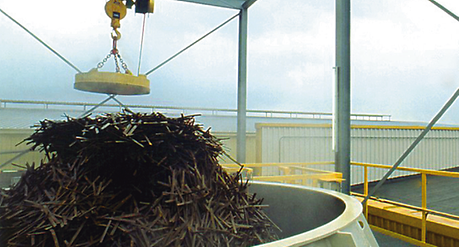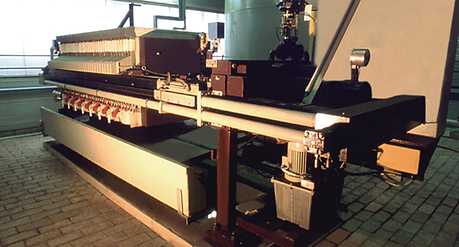ANDRITZ AG, Austria
regeneration systems for carbon steel
Eibesbrunnergasse 20
1120 Vienna
WAPUR is the optimum process for cleaning spent pickling acid.
In a conventional spray roasting process, the metal chloride contained in the pickling acid is converted to metal oxide by thermal decomposition. The metal oxide composition then mirrors that of the pickled base material.
With the WAPUR process introduced upstream of the spray roasting plant, much of the unwanted contamination can be removed from the pickling acid. Iron oxide, once a by-product, is thus turned into a valuable material that meets the stringent requirements of the electronics industry.
The untreated acid is pumped continuously from the waste acid storage tank to a leaching column in the WAPUR system, where it is enriched with iron using scrap from the trimming shears of the pickling line. In the leaching column, the residual free hydrochloric acid in the untreated pickling liquor is bound to the iron. The overflow from the leaching column flows into the reaction tank.
After increasing the pH value, part of the bivalent iron is transformed into iron hydroxide and part of it is oxidized to trivalent iron. This hydroxide then adsorbs other co-precipitated elements.
Steel scrap is fed to the leaching column
Automatic chamber filter press
The particles are agglomerated by adding a flocculant and settle in a sedimentation tank. This slurry is removed in a filter press, while the filtrate – which is very clean waste pickle liquor – is routed to the storage tanks for processing in the acid regeneration plant.


